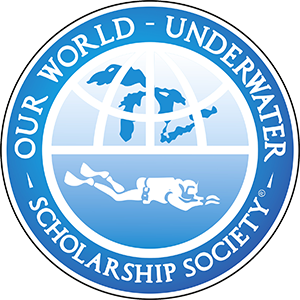The 5th of January found me flying across the Tasman Sea to visit Jade Berman, the 2003 European Scholar in Wellington, New Zealand. I had already spent a few weeks with her whilst in Indonesia and we organised some activities in New Zealand where she is currently co-ordinating the scholarship while pursuing her PhD on sponge communities. Jade was pleased to have another dive buddy and we got to work taking photos of sponges at set areas to document changes over time. Although not as warm as clear as Indonesia the dives were still very interesting with lots of cryptic fish, invertebrates and the sponges in all shapes and colours (that Jade finds very exciting!).
The south coast of Wellington is now New Zealand’s newest marine reserve. The Taputeranga Marine Reserve had recently been declared around Island Bay and it was good to do some diving in the area. Hopefully when I am back in the future there will be some noticeable changes. Unfortunately due to the proximity of the city and easily accessible from shore, many fish and valuable invertebrates such as paua (abalone) and crayfish have now become hard to find from ever increasing fishing pressure. This was also the site for increasing marine awarness to the younger generation. Many of the PhD students at Victoria University also volunteer their time to take school children for some of their first marine experiences – a snorkel, this was good fun and the kids were stoked!
We finished the sponge surveys then I was lucky enough to travel north for some warmer waters and spent ten days around the Poor Knights Islands with Dive! Tutukaka (see previous blog entry). Although a trip up north and an interest in marine science would not be complete without a visit to the Cape Rodney – Okakari Point Marine Reserve. Or better known as the Goat Island or Leigh Marine Reserve – the first in New Zealand and has been fully protected since 1975. It has been home to many scientific studies documenting large increases in fish and crayfish inside a marine reserve. For example snapper were calculated to be over 8 times more abundant and much larger than nearby unprotected areas. In addition, this study site has provided evidence that the protection of key fish species has led to the reduction of urchin barrens and an increase in kelp habitat. This was due to predation on sea urchins by snapper, thus leading to a more natural ecosystem. Although I only had a chance for a quick snorkel around the island, as expected large snapper were abundant and quite curious of divers. Really cool to see how different areas can be just from the removal of fishing! There I was able to collect some good video footage to later make a video showcasing marine parks around the world.
Back in Wellington I had a week to catch up with some friends had met whilst in Indonesia during July, Pelayo Salinas and Abi Powell have been studying marine connectivity and sponges respectively. With a large contingency of PhD students at the Victoria University of Wellington studying various aspects of marine science it was a good place to learn about the lifestyle of a future PhD. From people studying coral communities on isolated coral atolls to fish ecology and genetics, it was great to hang out and talk marine science. Particular interests was with Tyler Eddy’s study on modelling population changes in marine reserves and also helping out on the boat and lab with Alejandro and Sebastian’s studies on kelp fishes and gummy sharks.
Thanks to Jade for taking really good care of me and everyone else around Wellington that made me feel very welcome. Lisa Minchin was also a great friend, taking me snorkelling around Goat Island and driving me to Auckland airport. You guys are awesome and I will definitely come back and visit before too long.
